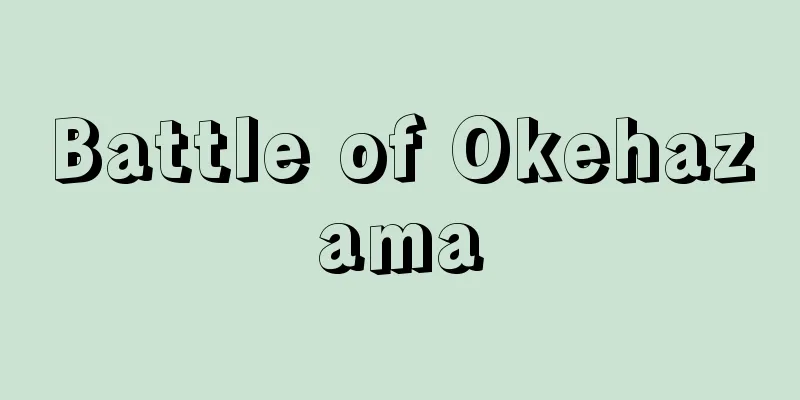Management and Coordination Agency - Soumuchou

|
Based on the National Administrative Organization Act, the Management and Coordination Agency was established in 1984 as an external bureau of the former Prime Minister's Office in accordance with the Management and Coordination Agency Establishment Act. With the reorganization of central government ministries and agencies in January 2001, it was reorganized and merged with the Ministry of Home Affairs and the Ministry of Posts and Telecommunications to become the Ministry of Internal Affairs and Communications. The Management and Coordination Agency was established with the aim of reorganizing and streamlining the overall coordination and management functions within the government, following the concept of a "General Management Agency" in the (Second) Provisional Administrative Reform Commission's Basic Report (Third Report). With this objective in mind, the Management and Coordination Agency was made an organization whose "primary mission is to carry out in an integrated manner the affairs related to personnel administration, affairs related to the organization, quotas and operation of administrative agencies, and other affairs related to the general coordination of specific policies and affairs that do not fall under the jurisdiction of other administrative agencies, as well as the supervision of administrative agency operations, and affairs related to pensions and statistics, in order to contribute to the comprehensive and efficient implementation of administration" (Article 3 of the Management and Coordination Agency Establishment Law). Therefore, the Management and Coordination Agency took over the affairs of the Administrative Management Agency, as well as the affairs of the Prime Minister's Office, including the general coordination of personnel management of national civil servants and other affairs related to personnel administration by the Personnel Bureau, pension affairs by the Pension Bureau, the affairs of the census and other affairs by the Statistics Bureau, and the general coordination of affairs in specific administrative fields, such as traffic safety measures. The Commissioner was a Minister of State, and the internal bureaus were the Commissioner's Secretariat and five bureaus: Personnel, Administrative Management, Administrative Inspection, Pensions, and Statistics. There were also councils such as the Public Service System Council (5 including those established by government ordinance), facilities and organizations such as the Statistics Center, special organizations such as the Youth Affairs Headquarters and the Northern Territories Affairs Headquarters, and local branch bureaus such as seven Regional Administrative Inspection Bureaus and the Okinawa Administrative Inspection Office. With the reorganization of central ministries and agencies in 2001, the internal bureaus of the Management and Coordination Agency, the Administrative Management Bureau and the Statistics Bureau, were taken over as they were by the new Ministry of Internal Affairs and Communications, but the Administrative Inspection Bureau was renamed the Administrative Evaluation Bureau, and the Personnel Bureau and Pension Bureau were merged into the Personnel and Pension Bureau before being taken over by the Ministry of Internal Affairs and Communications. As for facilities and organizations, the Statistics Center was taken over as a facility and organization of the Ministry of Internal Affairs and Communications, but was made into an independent administrative institution in April 2003. As for special organizations, the functions of the Youth Affairs Headquarters were taken over by the Cabinet Office, the Ministry of Education, Culture, Sports, Science and Technology, and the National Police Agency, respectively, and the Northern Territories Affairs Headquarters was taken over by the Cabinet Office. [Toshiro Fuka and Kengo Yamada] [Reference items] | | |Source: Shogakukan Encyclopedia Nipponica About Encyclopedia Nipponica Information | Legend |
|
国家行政組織法に基づき、総務庁設置法によって、旧総理府の外局として1984年(昭和59)に設置された国の行政機関。2001年(平成13)1月の中央省庁再編に伴い、自治省、郵政省とともに再編統合され、総務省となった。 総務庁は、(第二次)臨時行政調査会の基本答申(第三次答申)の「総合管理庁」構想を受けて、政府部内における総合調整機能、総合管理機能の再編整備をねらいとして設置された。総務庁は、このような目的から、「行政の総合的かつ効率的な実施に寄与するため、人事行政に関する事務、行政機関の機構、定員及び運営に関する事務その他特定の施策及び事務の総合調整に関する事務で他の行政機関の所掌に属しないもの並びに行政機関の業務の監察、恩給及び統計に関する事務を一体的に遂行することを主たる任務とする」機関とされていた(総務庁設置法3条)。したがって総務庁は、行政管理庁の事務と、総理府本府の事務のうち、人事局の国家公務員等の人事管理に関する総合調整その他人事行政に関する事務、恩給局の恩給に関する事務、統計局の国勢調査等の事務等、および交通安全対策等、特定の行政分野における事務の総合調整を引き継いだことになった。長官には国務大臣があてられ、内部部局として長官官房のほか人事、行政管理、行政監察、恩給、統計の5局が置かれ、審議会として公務員制度審議会など(政令によるものを含め5)、施設等機関として統計センター、特別の機関として青少年対策本部および北方対策本部、および地方支分部局として七つの管区行政監察局や沖縄行政監察事務所などが置かれていた。 2001年の中央省庁再編により、総務庁の内部部局に関しては、行政管理局、統計局はそのまま新省庁である総務省に引き継がれたが、行政監察局は行政評価局に改称されたうえで、また、人事局と恩給局については人事・恩給局に統合されたうえで、総務省に引き継がれた。施設等機関に関しては、統計センターはそのまま総務省の施設等機関として引き継がれたが、2003年4月に独立行政法人化された。特別の機関に関しては、青少年対策本部の機能が内閣府、文部科学省、警察庁にそれぞれ引き継がれ、北方対策本部は、内閣府に引き継がれた。 [福家俊朗・山田健吾] [参照項目] | | |出典 小学館 日本大百科全書(ニッポニカ)日本大百科全書(ニッポニカ)について 情報 | 凡例 |
<<: Somen (plain noodles) - Somen
>>: Weevil (elephant beetle) - Weevil
Recommend
incisional biopsy
...A method of making an incision and removing pa...
Fisheries Finance
This refers to the lending and borrowing of funds ...
Unicorn - Ikakujuu
The English name is unicorn. It is an imaginary a...
Reverse relationship - Gyakuen
〘Noun〙① Buddhist term. The cause and effect that b...
Nitrogen fertilizer - Nitrogen fertilizer
A general term for fertilizers whose main compone...
AC (electricity)
…Abbreviated as AC. A current or voltage that cha...
New edition of Musashi Fudoki - New edition of Musashi Fudoki
An official geography book of the Edo Shogunate. 2...
Meiwa [town] - Meiwa
A town in Oura County in southeastern Gunma Prefec...
Moralist - Moraliste (English spelling)
Moralist is a general term for a certain type of ...
Nobeyamahara
A plateau in the eastern part of Nagano Prefecture...
Judge Oguri
The title of a sekkyo joruri piece. The author an...
Asharb - Asharb
…Freeloader [Yoshio Kawakatsu] [Arab Society] Fro...
Gensei - Gensei
He was a Nichiren sect priest in the early Edo pe...
Obshchestvo
…Russian rural communities, also called obshchina...
Market equilibrium
The basic idea of market equilibrium is that the...









